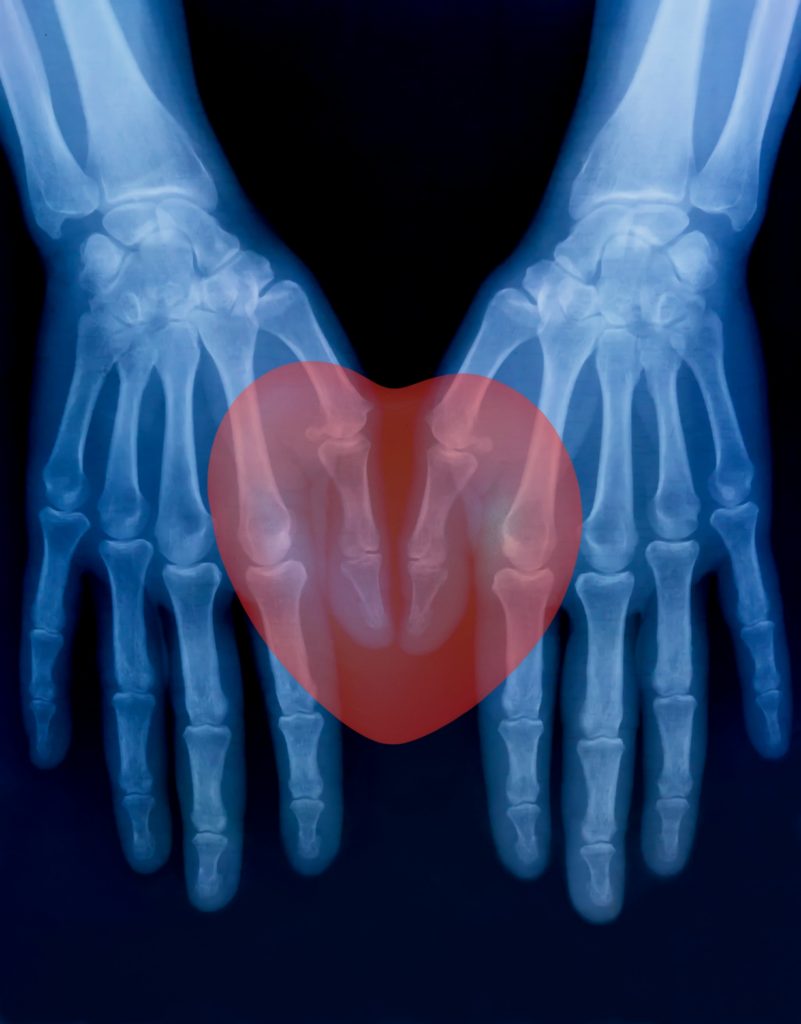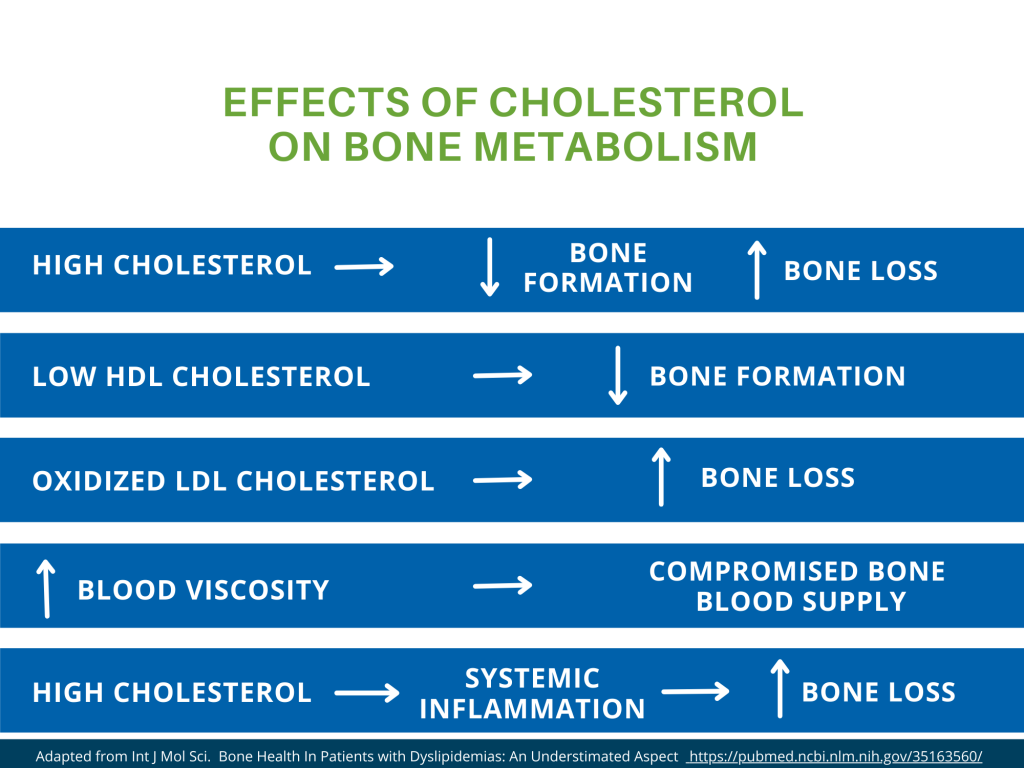 Osteoporosis and cardiovascular disease share many common risk factors such as diabetes, smoking, alcohol abuse, sedentary lifestyle, and in postmenopausal women, a decline in estrogen. However, over the last several years, emerging research has shown a growing link between the two conditions. In fact, a recent observational study reported in the Journal Heart found that a formal diagnosis of osteoporosis was independently associated with a 79% higher risk of cardiovascular disease. Last year in my blog articles titled The Curious Connection Between Osteoporosis and Heart Disease and Curious Connection, part 2 I highlighted two common links between osteoporosis and heart disease, high blood pressure, and atherosclerosis caused by calcium deposits building up in the arteries. Now another strong link has emerged. Dyslipidemia.
Osteoporosis and cardiovascular disease share many common risk factors such as diabetes, smoking, alcohol abuse, sedentary lifestyle, and in postmenopausal women, a decline in estrogen. However, over the last several years, emerging research has shown a growing link between the two conditions. In fact, a recent observational study reported in the Journal Heart found that a formal diagnosis of osteoporosis was independently associated with a 79% higher risk of cardiovascular disease. Last year in my blog articles titled The Curious Connection Between Osteoporosis and Heart Disease and Curious Connection, part 2 I highlighted two common links between osteoporosis and heart disease, high blood pressure, and atherosclerosis caused by calcium deposits building up in the arteries. Now another strong link has emerged. Dyslipidemia.
Dyslipidemia refers to having unhealthy levels of one or more kinds of lipids (fats) in your blood, such as low-density lipoprotein (LDL), high-density lipoprotein (HDL), and triglycerides. Most of us have heard that LDLs are the so-called “bad” cholesterol and that HDLs are the so-called “good” cholesterol. It is well known that dyslipidemia resulting in high LDLs and triglycerides in combination with low HDLs can cause atherosclerosis and heart disease. It is now becoming evident that dyslipidemia can also lead to low bone mass and increased fracture risk.
Here’s how:
Bone is highly vascularized tissue that depends on a constant supply of blood for regeneration and remodeling. In fact, a typical long bong is nourished through 3 separate vascular systems to meet the metabolic needs of the bone. As in atherosclerosis of the heart, fats and cholesterol can accumulate in the blood vessels of the bone. When these fats become oxidized, especially the LDL cholesterol, it causes inflammation and damage, leading to arterial calcifications and plaques. In the heart, this can lead to blockages and heart attacks. In the bone, this can suppress osteoblast formation (cells that make new bone) and an increase in the production of osteoclasts (cells that break down bone) leading to bone loss. Having high lipid levels can also increase blood viscosity compromising blood flow to the bone.
Just like having higher levels of HDL cholesterol is associated with a lower risk of heart disease, it is also recently been reported to be associated with higher bone mineral density. HDL cholesterol is considered to be the ‘good” cholesterol because it helps to transport excess cholesterol from the body to the liver where it is then flushed from the system. HDL cholesterol also helps to modulate inflammation. Inflammation has a negative effect on bone and can disrupt bone metabolism leading to bone loss. In a recent study published in the journal Lipids in Health and Disease, the researchers report a positive association between HDL cholesterol and lumbar spine bone mineral density in people aged 20-59. Meaning the higher the HDL cholesterol, the higher the bone mineral density in the lumbar spine.
Below is a table that summarizes the effects that dyslipidemia can have on bone metabolism.

7 ways to protect your bones and your heart
- Emphasize Exercise- Aerobic exercise, as well as strength training, can boost HDL cholesterol levels. Exercise has also been shown to enhance the antioxidant and anti-inflammatory effects of HDL cholesterol.
- Opt-In for Olive oil. Research has also shown that one of olive oil’s heart-healthy effects is an increase in HDL cholesterol. This may be because it is a rich source of antioxidants called polyphenols.
- Don’t forget Fatty Fish. The omega 3 fats in fatty fish may help raise HDL cholesterol and decrease triglycerides. Taking fish oils supplements can do the same.
- Pile Up on Purple Foods. Anthocyanin, the plant flavonoid found in purple foods, has antioxidant effects which can increase HDL cholesterol, decrease LDL cholesterol and help fight inflammation. Examples of foods rich in anthocyanins include eggplant, red cabbage, blueberries, blackberries, cranberries, and cherries.
- Splurge on Soluble Fibers. Soluble fibers bind to cholesterol in the intestine and remove it from the body. Legumes, vegetables, oatmeal, quinoa are good examples of foods with soluble fibers.
- Go for the Garlic. Garlic has been shown to decrease total cholesterol levels and increase HDL cholesterol.
- Add Anti-inflammatory Herbs. Anti-inflammatory herbs like ginger, turmeric, thyme, and cloves all have powerful anti-inflammatory effects that can help to prevent the oxidation of LDL cholesterol in the body.
As women go through menopause the decline in estrogen plays a strong role in developing heart disease and osteoporosis. But with a nutritious diet and healthy lifestyle, you can offset the effects. What the link between these 2 conditions truly shows is that any steps you take to support your heart health will also support bones and vice versa.
Please reach out if you need more guidance on building strong bones, a strong heart, or a strong body! 703-738-4230 susan@nurturedbones.com






